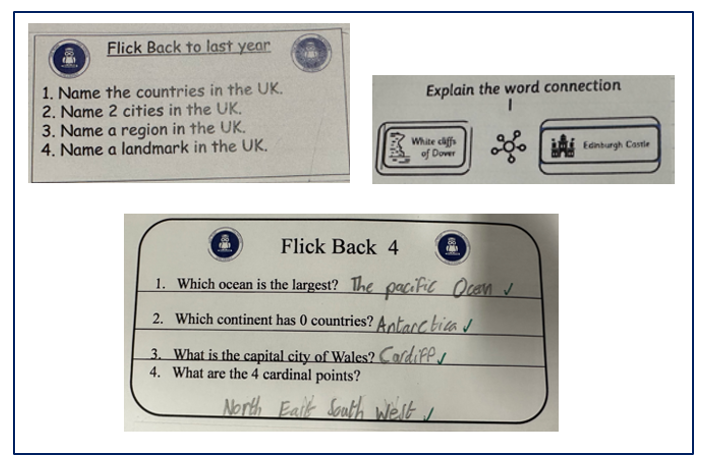Geography
At St. Paul’s, we aim to provide a high-quality geography education which inspires in pupils a curiosity and fascination about the world and its people, that will remain with them for the rest of their lives. Our Geography curriculum aims to inspire children, encouraging them to play an active part within our global community.
Geographical enquiry begins in the Early Years, as children begin to develop a sense of the world around them. Our children in their Early Years make observations about their environment and explore similarities and differences between life in this country and life in other countries.
In Key Stage 1, children begin to learn about their locality and where they live. They begin to learn about the physical and human features of our local area Astley Bridge, Bolton, and our location in relation to the rest of the United Kingdom. Children in Key Stage 1 have the opportunity to compare different locations around the world, such as hot and cold places and continents, carefully selected to meet the needs of the children we serve. Fieldwork forms an important part of our Geography curriculum at Key Stage 1, linked to our school, our local area, Astley Bridge, and our town Bolton.
As children move into Key Stage 2, they continue to develop their contextual local and world knowledge of locations, places, and geographical features. Children are given regular opportunities to develop their understanding of map work through drawing and interpreting maps at different scales and using digital resources. Fieldwork branches outside of our town at Key Stage 2, with children having the opportunity to visit our local city, Manchester, the rural landscape of the West Pennine Moors, Eagley Brook, St. Anne's coastal landscape, and the Lake District.
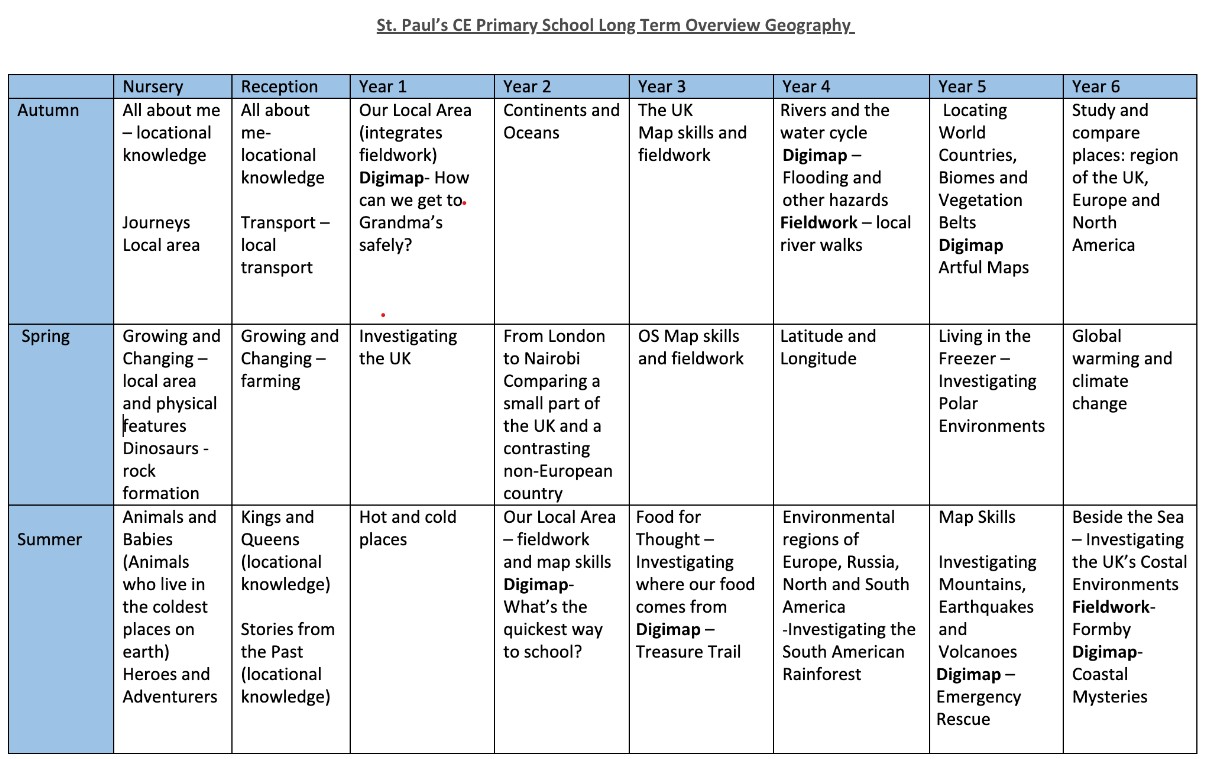
Geography at St. Paul's
Mapping of Key Knowledge
The sequence of learning has been mapped out across the geography curriculum, with clear essential and desirable knowledge identified.
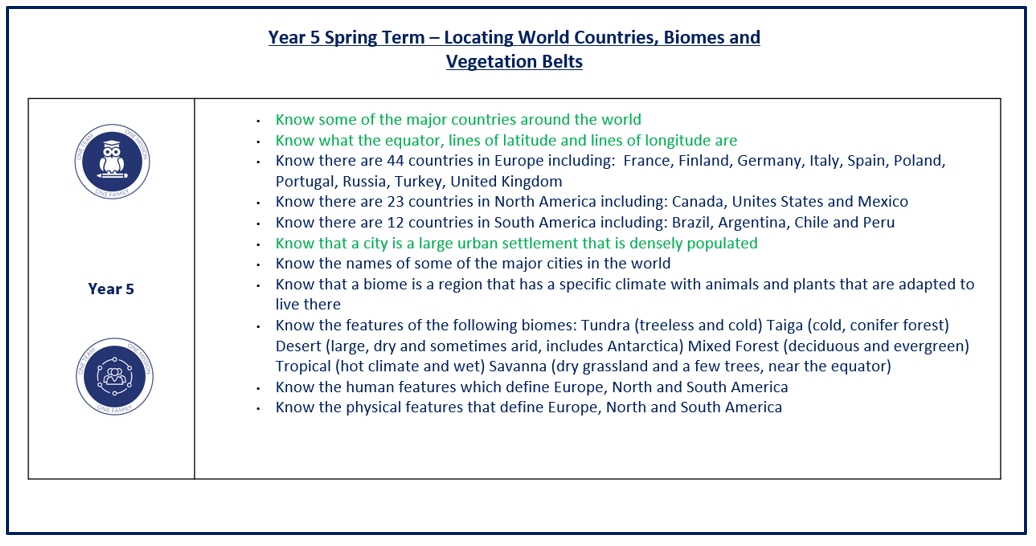
Vital Vocabulary
Vital vocabulary is identified in each unit of learning, which enables our pupils to access a range of tier 2 and tier 3 vocabulary.
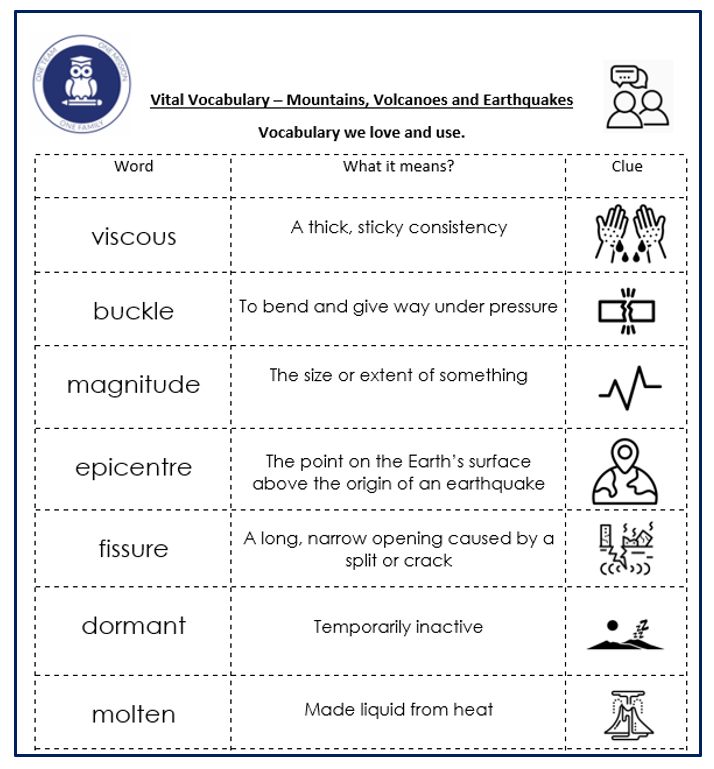
Graphic Organisers
'Combining words and images effectively facilitates learning; their impact is additive.' Pavio (1971)
In geography, graphic organisers are used to support learning from EYFS to Year 6. They are an integral part of our learning, as they provide a means whereby pupils can organise their ideas, before going on to express their thoughts in speech or writing.
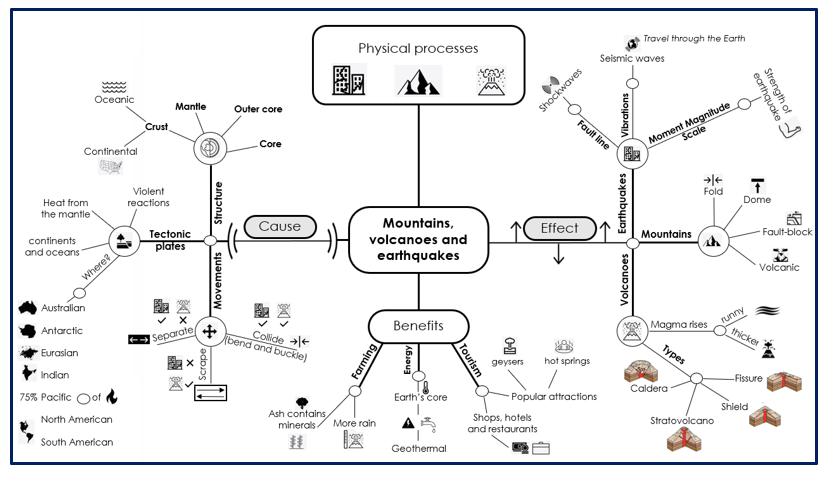
Knowledge Notes
Knowledge notes are used to communicate core knowledge and support pupils to attend to their learning in geography. Knowledge notes also support the learning of key vocabulary within each unit.

Retrieval Practice
'Using your memory, shapes your memory.' Bjork (2012)
Retrieval practice is used in geography as a powerful learning tool. It is used to:
- Support later retention and retrieval
- Identify gaps in knowledge
- Organise knowledge more effectively
- Provide valuable feedback to teachers
- Improve metacognition
- Improve transfer of knowledge to new contexts
When designing their lessons, teachers plan in regular opportunities for retrieval practice.
